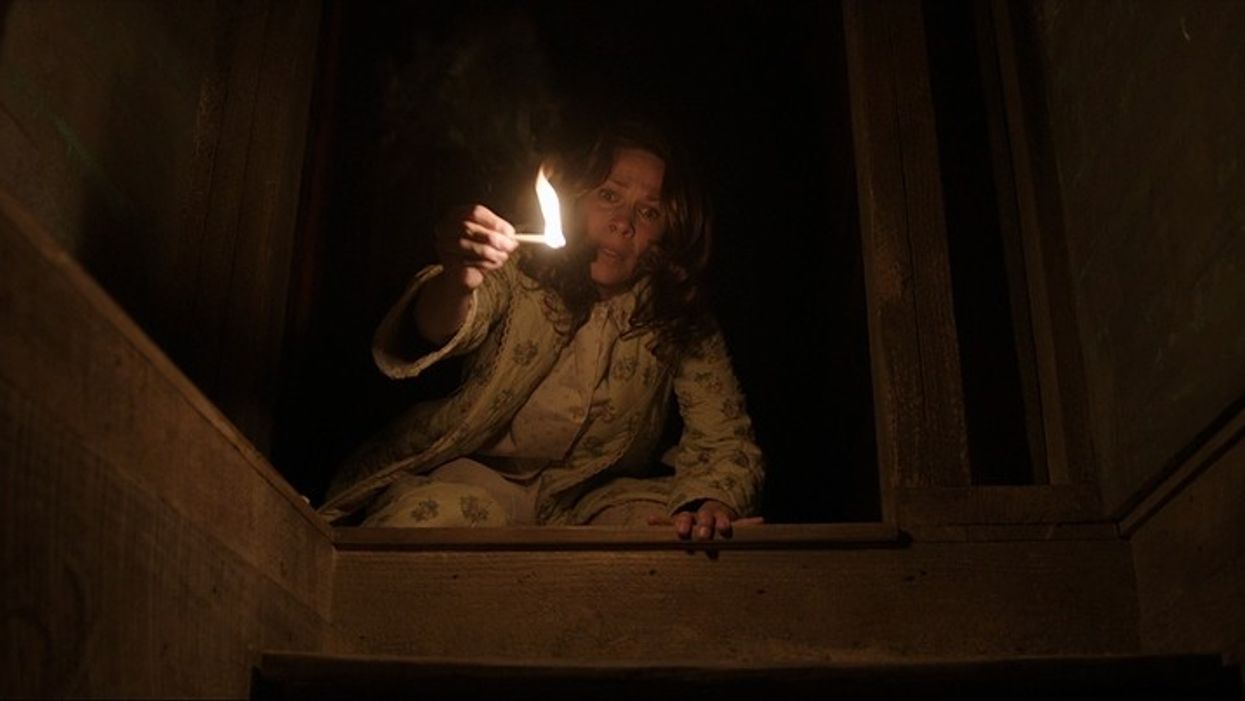10 Screenwriting Lessons Inspired by Horror Movies
It's spooky season so let's scare some life into your specs.

'The Conjuring'
The horror genre is full of screenwriting lessons that can be applied to anything, but especially work if you want to scare audiences. With a meticulous examination of tension, character development, atmosphere, and thematic depth, there's a ton to glean from this type of movie.
Prepare to embark upon this journey, where the macabre meets the formal craft of screenwriting.
Let's get started.
What Has To Happen In The First 10 Minutes Of A Horror Screenplay - Joston Ramon Theneywww.youtube.com
10 Screenwriting Lessons from Horror Movies
 'Scream'
'Scream'Credit: Dimension Films
Horror movies often push the boundaries of storytelling and create intense emotional experiences for audiences.
Here are 10 screenwriting lessons inspired by horror movies:
- Build Tension: Horror movies excel in building tension slowly. Screenwriters should take note of how these films introduce eerie elements and allow the suspense to simmer before unleashing the terror. This gradual escalation keeps viewers engaged.
- Example: The Shining (1980): Stanley Kubrick's slow build of tension in the haunted Overlook Hotel is a masterclass in creating suspense.
- Character Development: Strong character development is essential in horror films. Audiences care more about the fate of the characters when they have depth and relatability. Create well-rounded characters with flaws and motivations.
- Example: The Babadook (2014): This film delves deep into the psyche of a grieving mother and her troubled son, making their characters central to the horror.
- Use Atmosphere Wisely: Horror movies often rely on atmospheric elements like lighting, sound design, and setting to create a sense of dread. Effective screenwriting includes descriptions and directions that evoke the desired atmosphere.
- Example: The Witch (2015): The film's period-accurate setting and haunting atmosphere contribute significantly to its sense of dread.
- Subvert Expectations: The best horror movies often surprise viewers by subverting their expectations. Screenwriters can do this by defying genre conventions or introducing unexpected twists that challenge audience assumptions.
- Example: Get Out (2017): Jordan Peele's film uses social commentary and twists on racial dynamics to subvert traditional horror tropes.
- The Power of the Unknown: Fear of the unknown is a powerful tool in horror. Screenwriters can leave certain elements of the story ambiguous or unexplained to keep the audience's imagination running wild.
- Example: A Quiet Place (2018): The fear of the unknown creatures that hunt by sound is central to this film's tension.
- Foreshadowing: Effective foreshadowing can enhance the impact of horror. Subtle hints and symbolism can add depth to the story and make the horror elements feel more organic and inevitable.
- Example: The Sixth Sense (1999): M. Night Shyamalan uses subtle foreshadowing and symbolism to enhance the film's twist ending.
- Character Motivations: Understand the motivations of your characters, especially the antagonists. Knowing why a character is doing something horrifying can make the horror more psychologically disturbing.
- Example: Psycho (1960): Alfred Hitchcock's exploration of Norman Bates' motivations is key to the film's psychological horror.
- Sudden Shock vs. Slow Burn: Horror can be delivered in different ways, from jump scares to slow-burning psychological horror. Know when to use each technique to maximize their impact.
- Example: Hereditary (2018): This film skillfully combines slow-burning dread with shocking and unsettling moments.
- Conflict and Stakes: Horror thrives on conflict and high stakes. Create situations where characters have something to lose and where the tension is palpable.
- Example: The Conjuring (2013): The Warrens' battle against malevolent entities provides high stakes and intense conflict.
- Themes and Social Commentary: Many horror movies have deeper themes and social commentary beneath the scares. Use the horror genre to explore societal fears, anxieties, and issues in a thought-provoking way.
- Example: Us (2019): This film brilliantly uses horror to address duality and fear of the other in a thought-provoking way.
Remember that while horror movies are a great source of inspiration, these screenwriting lessons can be applied to various genres to create engaging and impactful stories.
The key is to understand the principles of tension, character, and atmosphere and adapt them to your specific storytelling needs.
Let me know what you think in the comments.
- Read and Download the 'Midsommar' Script PDF ›
- Why Mike Flanagan's 'Midnight Mass' Is the Scariest Show You'll Watch This Year ›
- Take a FREE Horror Writing Master Class with Sundance ›

 "'Back Home"via Mercedes Arutro
"'Back Home"via Mercedes Arutro 'Back Home'via Mercedes Arutro
'Back Home'via Mercedes Arutro 









